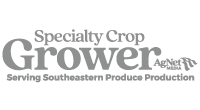
Scientists see genetic editing — and in particular CRISPR technology — as a potential way to rescue Florida citrus from HLB disease, but consumer perceptions of the technology are key.
The University of Florida Institute of Food and Agricultural Sciences’ (UF/IFAS) Bachir Kassas is working to assess consumer acceptance of biotechnology. Kassas is an assistant professor in the UF/IFAS Department of Food and Resource Economics and co-lead of the Human Dimensions Team in the university’s Crop Transformation Center.
His work will help guide scientists, citrus growers and others in the industry with insights on consumers’ perceptions, attitudes and preferences for gene editing and modification in citrus.
CRISPR allows scientists to modify DNA by cutting sections of the genetic code. This way, scientists can remove, add or alter genes. The goal can be to make the resulting trees more resistant to disease or to improve the taste of fruit. In genetic modification, scientists can modify crops and other organisms by taking genes from one species and inserting them into another species.
To gauge consumers’ willingness to buy orange juice made from CRISPR-edited citrus, consumers first need to understand the basics of CRISPR.
Kassas already has an idea of consumer knowledge of CRISPR. He showed a video to focus groups in New York City and Jacksonville in 2021. Even after watching the video, they still didn’t understand the acronym, nor the difference between gene editing and gene modification. “Most people think it’s something in a refrigerator,” Kassas said.
Over the next year, Kassas plans to test the effectiveness of different communication formats on consumers’ acceptance and willingness to pay for orange juice produced from citrus developed through GM (genetic modification) and CRISPR. GM and CRISPR are forms of biotechnology.
The study, which will be conducted in Gainesville, will present consumers with different formats of a promotional message. It will examine their resulting neurophysiological responses to citrus and biotech stimuli as well as their valuations for orange juice made from citrus grown with and without biotechnology.
The upcoming experiment follows a study published in November, in which Kassas and other researchers presented almost 2,000 online participants with information in multiple ways. That research showed that consumers discount orange juice made using biotechnology compared to the conventional non-biotech alternative, but the discount was almost twice for GM compared to CRISPR.
But all information — and the ways it’s framed — helps, Kassas said. “In our previous research, our results showed that all messaging formats were effective in increasing acceptance for CRISPR,” he said. Specifically, positively framed information was more effective than negatively framed information. “Efficient educational and marketing campaigns are critical to the successful commercialization of CRISPR food products, especially given the resistance GM foods have faced in the market,” Kassas said.
Through more effective messaging, UF/IFAS scientists and economists hope to better inform consumers about what it means to alter genes in various organisms, including crops.
Source: UF/IFAS
Share this Post
Sponsored Content










